Our First RV Rental: Minnie Winnie Winnebago 31H Motorhome
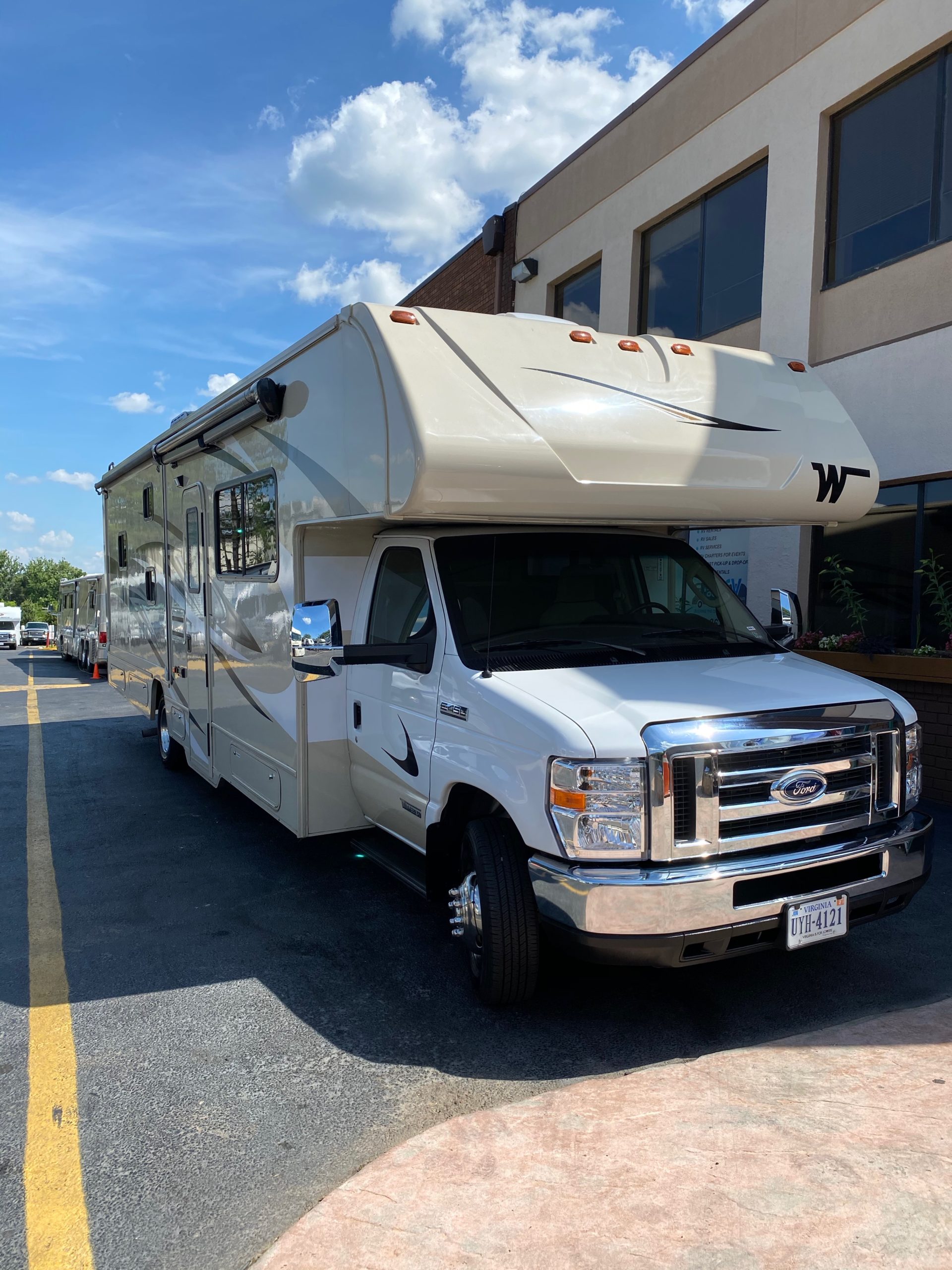
Some of the links in this article may earn me affiliate income. This article has not been reviewed or edited by any third parties. All opinions, thoughts, evaluations are my own. You can read our full advertiser disclosure here.
As part of our family’s exploration of the RV world, I’ll be writing a series of articles about what we’ve learned so far. I started out with a beginner’s guide to renting an RV. I plan to write a few articles about the types of RVs we rented and some of the campsites we tried out. I’m pretty sure there will be a “lessons learned” article as well, since we’ve made all kinds of mistakes! Our first RV rental was a motorhome.
We pulled the whole thing together at the last-minute. Our daughter was really nervous about taking a trip to Hersheypark, while our son was excited. Ultimately, the RV rental was a key part in having a great Hersheypark trip amidst the COVID-19 crisis.
If you want to hear more about our first RV adventure as well as thoughts from travel guru and up and coming RV aficionado Richard Kerr, tune into this podcast episode.
Let’s take a look at what we learned about motorhomes during our first trip.
Renting A Minnie Winnie Winnebago Motorhome
We rented from a local company in the DC area, and I’m sure glad we did. Cruise America or RV Share would have been fine for us. But, on this first rental, it was great to have someone show me the ropes, which they took the time to do.
They taught me a ton about the motorhome before rolling it off the lot. I definitely needed every bit of that knowledge. They taught me things that quickly saved me money (use a garden hose to fill your own fresh water tank and save from paying the rental company to do it) and how to drain the tanks (black water first, then use the gray water to flush the line).
Driving The Minnie Winnie
The Minnie Winnie is referred to as a Class C motorhome. The one we rented, the 31H, is 33 feet long. For comparison, the Ford Explorer, a middle of the road SUV in terms of size measures a bit more than 16 feet. So, this Class C motorhome is about twice that length. Driving something that long takes some getting used. Trust me when I say you won’t be cutting any corners too tight.
The Minnie Winnie is built on a light truck chassis, like many of the Class C motorhomes. With all that weight, it makes for a bumpy ride. It’s not particularly quiet, either, with plenty of road noise. It’s something like driving a UPS panel van, though with better air conditioning. Thankfully, it does come with a backup camera and some nifty cameras on both side mirrors to give you a better lay of the land.
The couch and dinette both had seat belts for passengers to strap in for the ride, and there is a normal passenger seat at the front of the Winnie. Our family found those seats in the back to be plenty comfortable for a long ride. The only small downside is that we didn’t run the air conditioning in the RV while we were driving. So, the only cooling was coming from the dashboard. On a hot day, it took a while for the back area to cool off.
I found the acceleration to be adequate, though we didn’t tackle any super large hills. We got about 8 miles per gallon for our ride, which was mostly highway. From my reading, you should expect a Class C motorhome to get somewhere between 8 and 10 miles per gallon, though smaller ones can get in the mid teens.
Living Space
The Minnie Winnie has two “slide-outs” or “bump outs”, where once you’re parked you can increase the size of the living space. There’s a control panel which has easily labeled switches. In only a few minutes time you can drastically increase the size of the living area and the bedroom area.
The dinette sits 4 easily and with small kids could easily squeeze in another. The kitchen area has a 3-burner stove, an oven and a microwave oven as well as a sink. There’s some counter space, though not much, and plenty of cabinets. Directly opposite the stove is the refrigerator/freezer. The typical RV fridge is smaller than your fridge at home. It’s more shallow and the shelves are closer together, so things like gallons of milk can be problematic. You won’t have a ton of space to cook a meal completely inside the motorhome but it is possible.
Our motorhome had a sizable flat screen TV mounted above the front seats as well as another TV in the bedroom, if you’re looking to stay in during your motorhome vacation. There were also electrical outlets and USB charging ports pretty much everywhere you could want one throughout the RV.
There’s one full bathroom in the Minnie Winnie. It has a typical camper toilet and a small sink as well as a shower with a sliding plastic door. It’s not big, but it’s functional for these sorts of trips. We never did run out of hot water even with a couple times of back-to-back showers.
Our camping trip was in the dead of summer, so we never got a chance to test the heat. However, the air conditioning kept us cool enough in the evening. The unit is a bit loud (especially if you’re sleeping on the dinette or sofa). But, it’s tolerable.
Like most motorhomes and travel trailers, the Minnie Winnie also comes with a sizable awning and some lighting for hanging out in the shade or later in the evening.
Bed Space
The Minnie Winnie 31H sleeps a lot of people. Starting at the front of the motorhome, there’s a bed over the driver’s and passenger’s seat. It’s big, pretty much as wide as a queen bed and longer than a king. The dinette converts to a bed roughly the size of a full-size mattress. This was the least comfortable bed in the RV. Arranging the cushions is kinda like a jigsaw puzzle and the cushions kept sliding off when I slept on it. The sofa converts to a bed that’s roughly queen size and pretty comfortable to sleep on.
Oddly, the RV door does not have a window shade. So, unless you want to have an early morning bright wake-up, make sure to cover the window with a towel or similar. It’s a bit tricky to wedge something in between the screen and main door.
Further back across from the bathroom are two bunk beds. These are twin-sized mattresses with curtains. They have their own light fixtures and electrical/USB outlets as well as small windows with curtains.
The bedroom has a curtain for privacy and a queen-sized bed as well as windows on 3 walls. There are electrical/USB outlets on both sides of the bed.
Storage
Inside the RV there are tons of cabinets and drawers. You’ll find deep cabinets above the dinette and sofa. In the kitchen, more cabinets overhead to go with a set of drawers. There’s another cabinet in the hall across from the bunk beds. In the bedroom there are two closets beside the bed for hanging items. There’s also a full armoire and a number of drawers on the opposite wall. In short, we didn’t really lack for interior storage, though our trip was only a couple of days. Still, I think you could fit a week’s worth of clothing and groceries for a family of 4 if you packed smartly.
Outside the RV you’ll also find plenty of storage broken up into smaller compartments. We stored charcoal, firewood, spare paper products and other outdoor gear and had space to spare. There’s also one larger compartment at the back where you can keep necessary supplies like the equipment to drain your black and gray water tanks and things like power cords and adapters. It’s also plenty big enough for a small to medium-sized grill.
Pros and Cons
Motorhomes have pros and cons and the Minnie Winnie is no exception. On the plus side, the Minnie Winnie has plenty of space, both for driving and for camping. It comes with a generator that can power the whole trailer using the gas from the gas tank (as long as you’re above 1/4 tank). All the connections are easy to get to for water, electric, cable, etc.
On the negative, if you need to drive to go get something when you get to your campsite, you’ll need to unhook all those connections and drive your motorhome off to the grocery store. That was definitely a downside for us on our first excursion. There are also a number of little quirks to the way the various systems work, but I suspect all RVs have a bit of that.
The Final Two Pennies
Overall, the Minnie Winnie is a reasonable option for families. While the price tag is high (they start at over $100K), they can be rented for less than $300 a day. We didn’t love the fact that we needed to pack up and unplug every time we needed to hit the grocery store or go exploring. That being said, we had a lot more space in it than we did in the first travel trailer we rented (stay tuned for more info on that trip). Motorhomes can be pricey, but the space to spread out while you’re driving is very welcome. The kids really enjoyed the experience much more so than any other car ride we’ve taken. Just make sure you look at all the potential extra charges before you pull the trigger on a motorhome rental. And, watch that overhead clearance!
Did you enjoy this post? Please share it! There’s plenty of ways to do that below.
You can also follow me on Twitter, Facebook and Instagram.
And, I hope you’ll check out my podcast, Miles To Go. We cover the latest travel news, tips and tricks every week so you can save money while you travel better. From Disney to Dubai, San Francisco to Sydney, American Airlines to WestJet, we’ve got you covered!

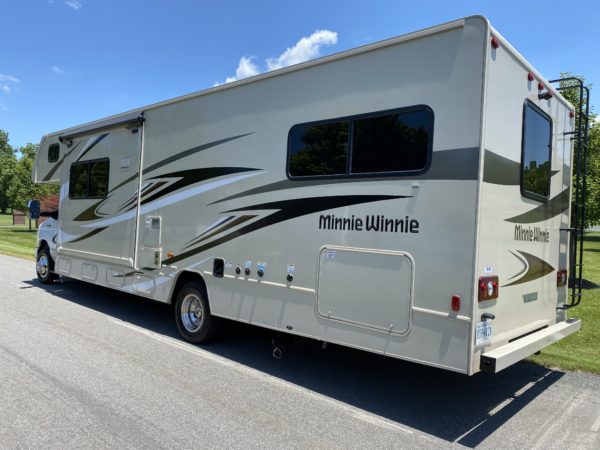
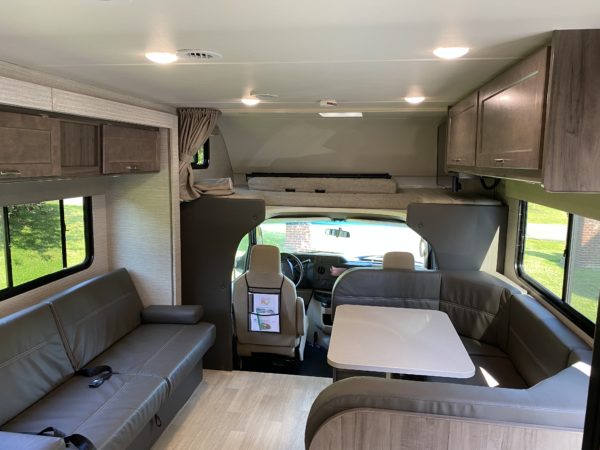
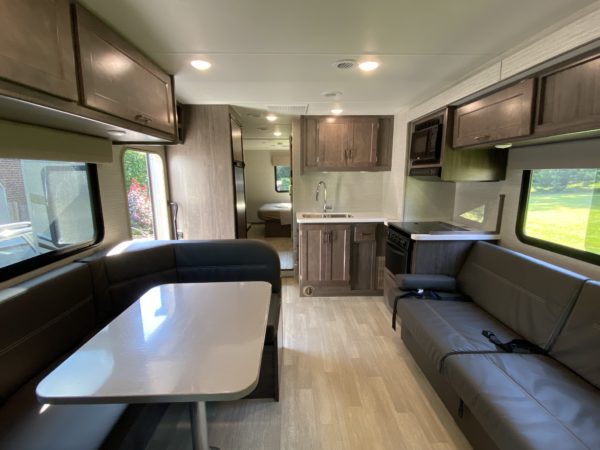

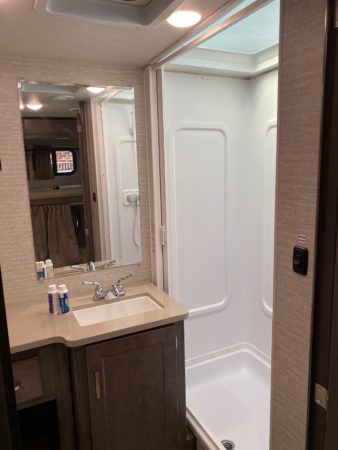
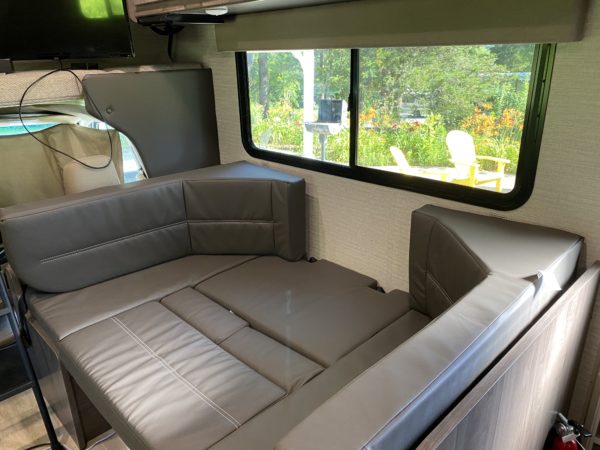
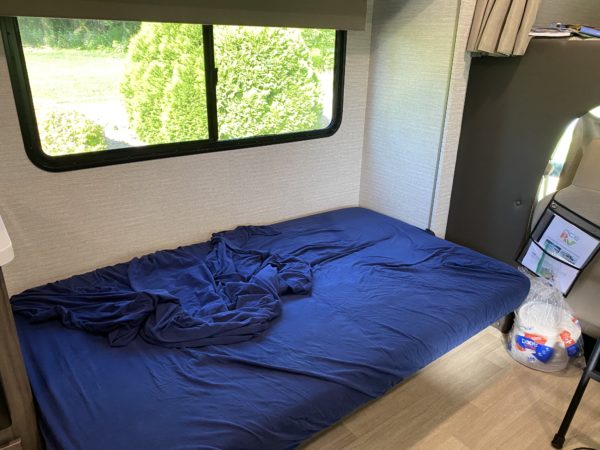
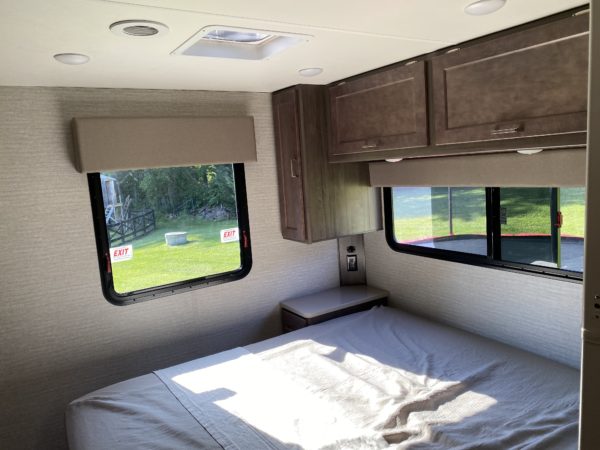
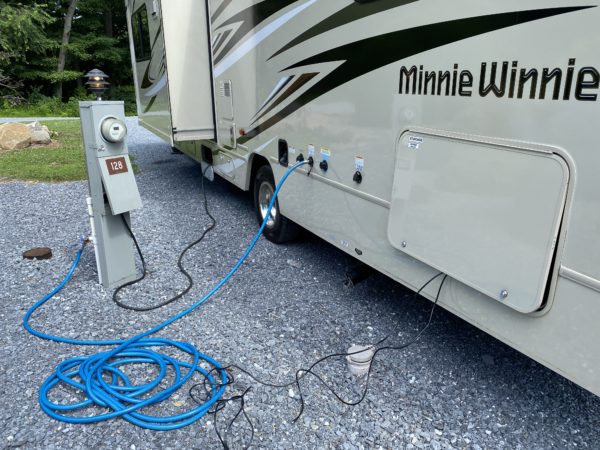
Nice review. We so enjoyed our trip to Glacier National Park a few summers ago via RVshare.com. We were advised by the owner that if we wanted to explore a bunch of places to rent a car and use the RV as our base. (We rented a compact from thrifty for about $20 a day and were upgraded to a mid sized car so that worked out well). Ed tell us more about the adventure of driving!
Paul, is this the RV your wife ripped the AC unit off of?
you make it sound intentional. yes, this was the RV that the AC unit came off of. 🙁
Ed.
How many gallons of gas does it take to fill up? How was the acceleration, and how was the acceleration going up hills?
Thanks.